How To Use Raspberry Pi Compute Module
Tom's Hardware Verdict
If you take the skills and the knowledge to embed this in a project, then y'all really should. If non, stick to a Raspberry Pi four.
Pros
- +
Impressive grade gene
- +
Powerful
- +
Compute Module iv IO Board is well
Cons
- -
Needs skills to go the most from information technology
- -
Expensive
The Raspberry Pi Compute Module 4 was a bit of a surprise when it was announced, but it is fair to say that it was a pleasant surprise. Squeezing the ability of a Raspberry Pi iv into an even smaller package, the Compute Module four is a product designed for the industrial and embedded markets. Sure a hobbyist tin make skillful employ of the board, but at that place are a few caveats in its use.
We were sent two Compute Module 4 units from Raspberry Pi trading: a module with 1GB RAM and 32GB of eMMC, and a Compute Module iv Lite with 8GB RAM and no onboard storage. We put both of them through their paces including overclocking their CPUs as high as 2.iii GHz to squeeze every concluding MHz from their cores.
Design of the Compute Module 4
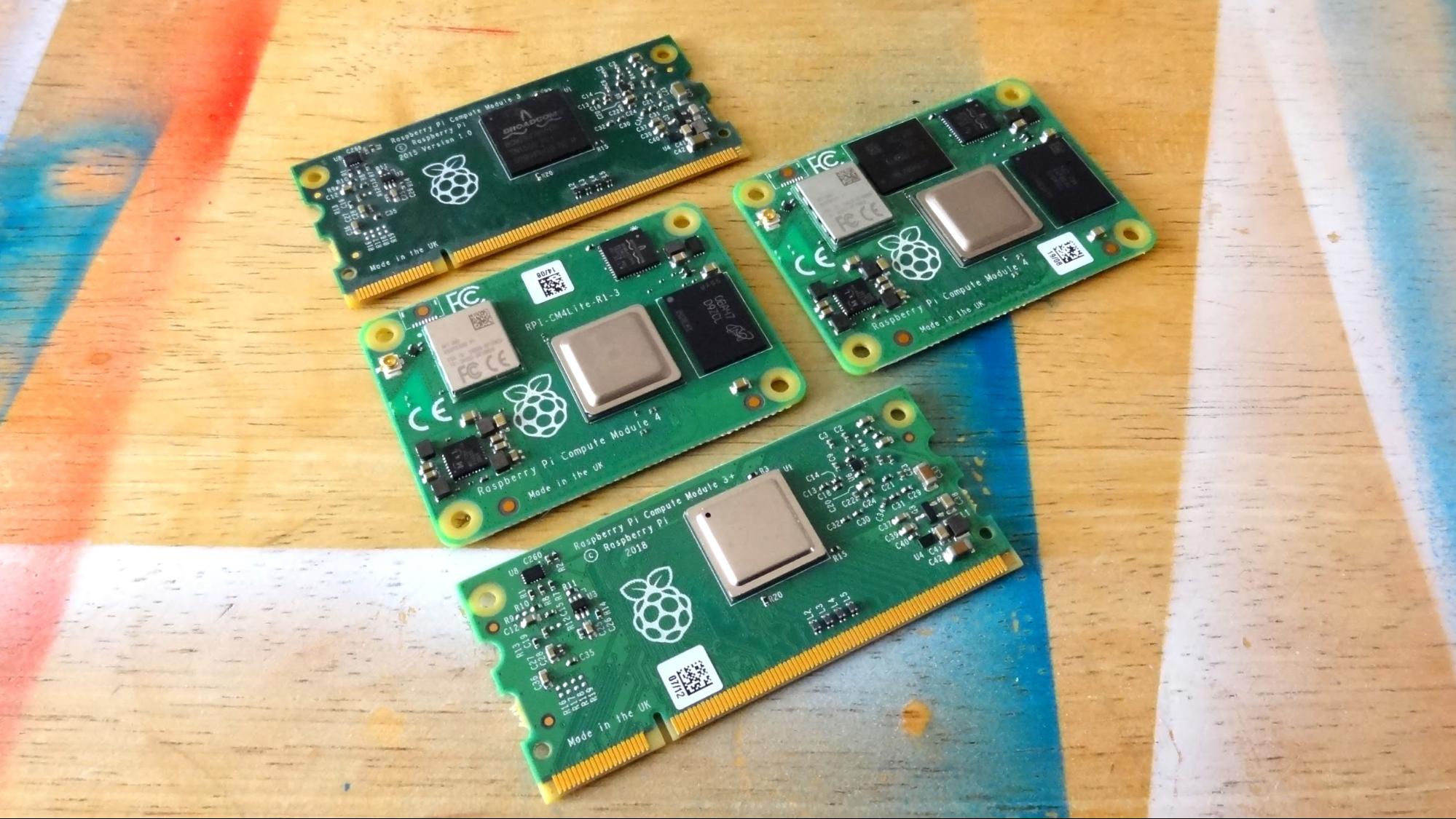
Measuring merely 2.1 10 1.5 inches (55 ten 40mm) the Compute Module four is a meaty package for Raspberry Pi 4 hardware. The Broadcom BC2711 SoC is the most visible aspect of the board, and in there nosotros take the quad-core Cortex-A72 (ARM v8) 64-bit SoC @ i.5 GHz. Depending on the module variant, there are options for embedded wink storage and Wi-Fi / Bluetooth. Boards with flash storage will have a black chip simply to a higher place the SoC, with a Raspberry Pi branded wireless chip (RPI-RMO) in the pinnacle left next to an optional external antenna connector.
The Compute Module iv is vastly different from earlier modules, which adopted a SODIMM connector. The Compute Module 4 connects to a carrier IO lath using "two high-density perpendicular connectors (one for power and low-speed interfaces, and one for loftier-speed interfaces)." This new connector breaks compatibility with older IO boards, but companies such every bit Gumstix have released adapter boards to catechumen CM4 modules for utilize in older IO boards, and similar adapters will be used with the Turing Pi 2 cluster computer.
Raspberry Pi Compute Module 4 Specs

| SoC | BCM2711 |
| i.5GHz quad-cadre 64-bit ARM Cortex-A72 CPU. | |
| VideoCore Vi graphics, supporting OpenGL ES 3.x with 4Kp60 hardware decode of H.265 (HEVC) video. | |
| 1080p60 hardware decode, and 1080p30 hardware encode of H.264 (AVC) video | |
| RAM | 1GB, 2GB, 4GB or 8GB LPDDR4-3200 SDRAM |
| Flash Storage | Optional 8GB, 16GB or 32GB eMMC Flash storage |
| GPIO | 40 GPIO pins, with up to vi × UART, 6 × I2C and 5 × SPI |
| Connectivity | Single-lane PCI Express two.0 interface. |
| Gigabit Ethernet PHY with IEEE 1588 support. | |
| two x USB 2.0 ports | |
| Dual HDMI interfaces, at resolutions up to 4K. | |
| Dual MIPI DSI brandish, and dual MIPI CSI-2 photographic camera interfaces. | |
| Optional 2.4GHz and 5GHz IEEE 802.11b/g/n/ac wireless LAN and Bluetooth 5.0 |
Raspberry Pi Compute Module 4 Variants
There are 32 variants of the Compute Module 4 ranging from the $25 Compute Module 4 Lite with 1GB RAM and no onboard storage or Wi-Fi, to a $90 Compute Module 4 with 8GB RAM, Wi-Fi and 32GB of onboard eMMC flash storage. Splitting the variants into ii batches, nosotros have sixteen modules with and a further 16 without Wi-Fi. Each batch has a model with one,ii,4 and 8GB of RAM and 8, 16 and 32GB eMMC storage options as well as a Calorie-free pick that omits the onboard storage.
Choosing the correct variant depends on your intended projection. As the Compute Modules are designed for embedded projects, the flexibility provided past such a staggering selection enables projects to be designed for different uses and price points. There is no sense in using a module with 8GB of RAM and 32GB storage if information technology is going to be used in robotics or elementary projects.
Using the Raspberry Pi Compute Module iv
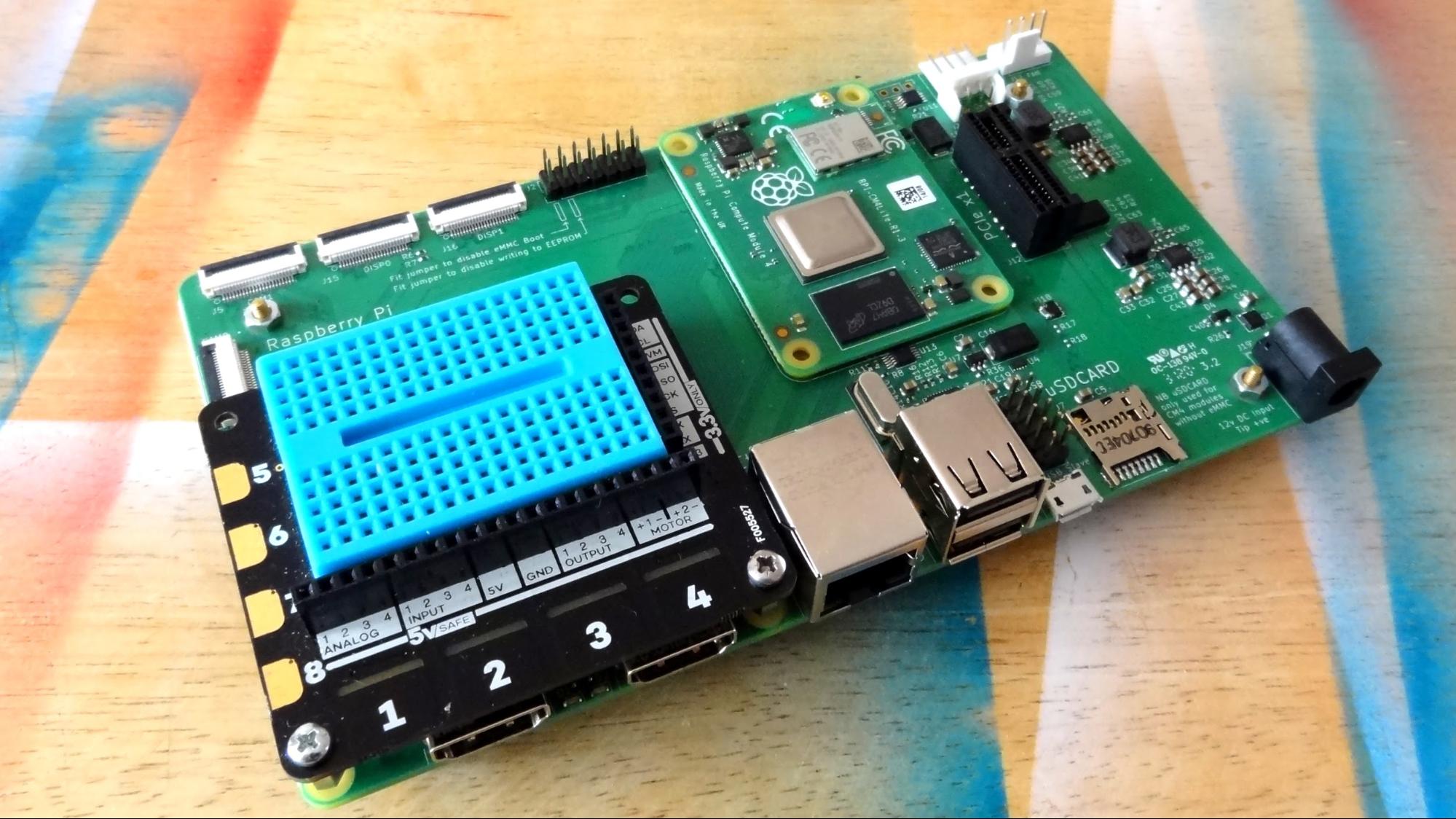
The Compute Module 4, like others before it, is a module that requires a carrier board in order for it to be used. Compute Modules are fabricated for use in embedded systems. For example, some NEC televisions utilise a Compute Module as their brains. But if we want to develop projects around the Compute Module, then we need to utilize a carrier board such every bit the official Compute Module IO Board, which is available separately for $35 only an essential purchase for development.
Developing projects with the IO Lath means that we connect the Compute Module iv to the connector and depending on if nosotros have a Lite or module with eMMC nosotros either insert a micro SD bill of fare and boot, or flash the eMMC using a tool provided by the Raspberry Pi Foundation (run across how to set upwards Raspberry Pi for the offset time).
In functioning, the Compute Module 4 behaves just like a Raspberry Pi 4, the IO Board also features a GPIO breakout that enables the utilise of HATs and add on boards. This reveals a deviation between earlier Compute Module IO Boards and the new. Older IO Boards provided access to every GPIO pin from the Broadcom SoC, via a non standard GPIO layout. The Compute Module iv provides a traditional forty pivot GPIO and a PoE header and nosotros tested the GPIO using a Pimoroni Explorer HAT Pro and everything worked as expected.

We ran a serial of Stressberry tests on our Compute Module four and Lite and institute that at 1.5 GHz the Compute Module 4 Lite was 33 Celsius, 7 degrees cooler than our stock Raspberry Pi 4. The Compute Module iv ran a little warmer at 35 Celsius.
During Stressberry testing the Compute Module iv ran at 67 Celsius, the Lite at 64 Celsius and our stock Pi 4 at 65 Celsius. That's not much difference between regular Pi 4 and the Compute Modules. We tin overclock the Compute Module four and the Lite to squeeze extra performance and in our tests we found that the Compute Module four Low-cal was able to overclock to 2.3 GHz!
Of form for the overclocks we had to use cooling and in our instance we hacked a Pimoroni FanShim to directly cool the SoC. The IO Lath comes with a standard 12V PC case fan connector (J17) which tin be controlled in software.
The Compute Module 4 IO Board
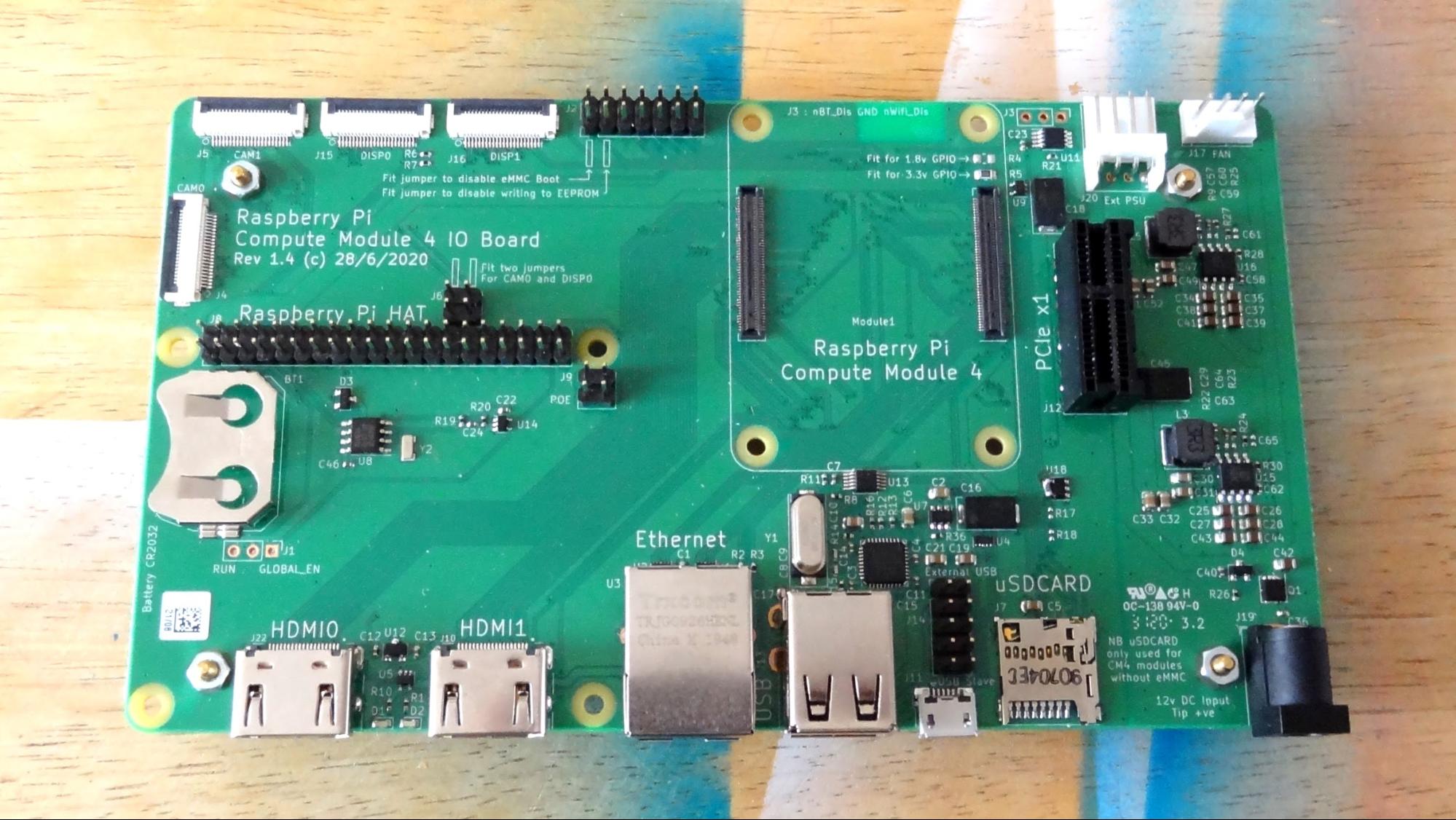
The Compute Module 4 is nothing without a carrier board, and the official board is the Compute Module 4 IO Board which is an essential purchase for your Compute Module 4 evolution. The IO Board provides the connections needed to work with the Compute Module 4. Around the IO Board we see connectors for two official Raspberry Pi cameras (V1, V2 and the High Quality Photographic camera) but y'all will need to utilize the smaller camera flex cables as used with the Raspberry Pi Zippo W. Ii official displays can too be used at the same time, again requiring a smaller cable.
The Raspberry Pi twoscore pin GPIO is present and in the same layout as a typical Raspberry Pi, enabling the apply of HATs and add on boards, along with the PoE Lid. Two full size HDMI ports, Gigabit Ethernet and two USB 2.0 ports are present along the side of the lath. Adjacent to the USB ports is a single micro USB port, used for connecting the IO Board to a computer where the eMMC can be flashed.
Adjacent to the micro USB port is a micro SD card slot and a breakout for external USB ports to be attached. At the far correct of the board is a unmarried DC input which provides 12V DC power to the lath, for which you will demand a skilful quality 12V DC power supply. In our tests nosotros used a 12V 2.5A supply and had no problems.

At the top right of the lath are 2 white connectors. ; J17 is a fan connection for a typical PC fan while J20 is an external ability supply connection.
The near interesting part of the IO Board is the PCIe Gen 2 x1 slot which tin be used with compatible devices, including PCIe SSDs. Right at present this is one expanse which is still beingness experimented with, and intrepid users such as Jeff Geerling are working to add GPUs and 5 GBPs Ethernet to the Compute Module four.
Use Cases for the Compute Module 4
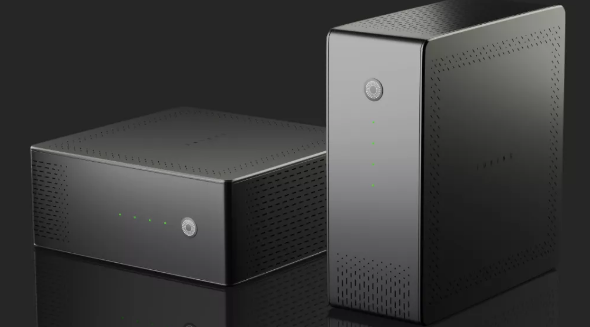
For cluster computing, such every bit the Turing Pi 2 projection, the Compute Module iv is an exceptionally powerful option.
The Compute Module 4 is built for embedded applications. If your projects are industrial or IoT in nature, then they could benefit from the Compute Module 4. To get the best from this board you will need the skills to design and fabricate your own carrier board, or the knowledge to select and buy the correct kit.
It is highly probable that enterprising companies will adopt the Compute Module four for employ in embedded devices. Expect a slew of handheld devices and crowd funded projects powered by this pocket-size all the same mighty device.
PCIe and the Compute Module four
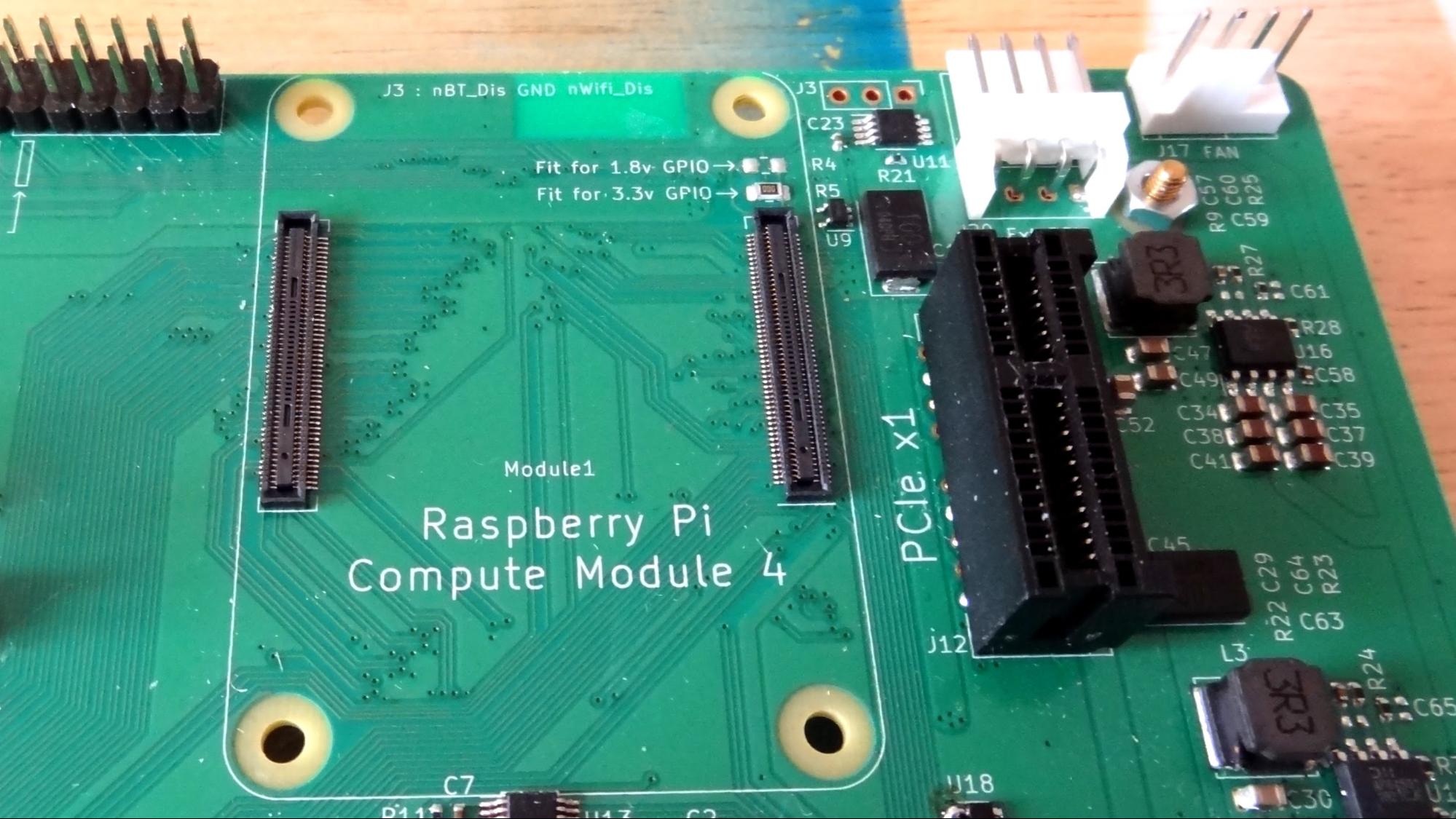
The Compute Module iv IO Lath is the start Raspberry Pi with an exposed and user configurable PCIe Gen ii x1 slot, enabling users to insert any uniform card including NVMe drives via an adapter.
The Raspberry Pi iv was the first board to have a PCIe controller and this was continued to the VLI805 used for two USB 3.0 ports. At the time of writing the limits of the PCIe port are still being investigated by hackers such equally Jeff Gerrling. In Geerling's tests, he found that a Samsung EVO Plus NVMe drive was vii times faster than the internal eMMC flash storage of the Compute Module 4.
Bottom Line
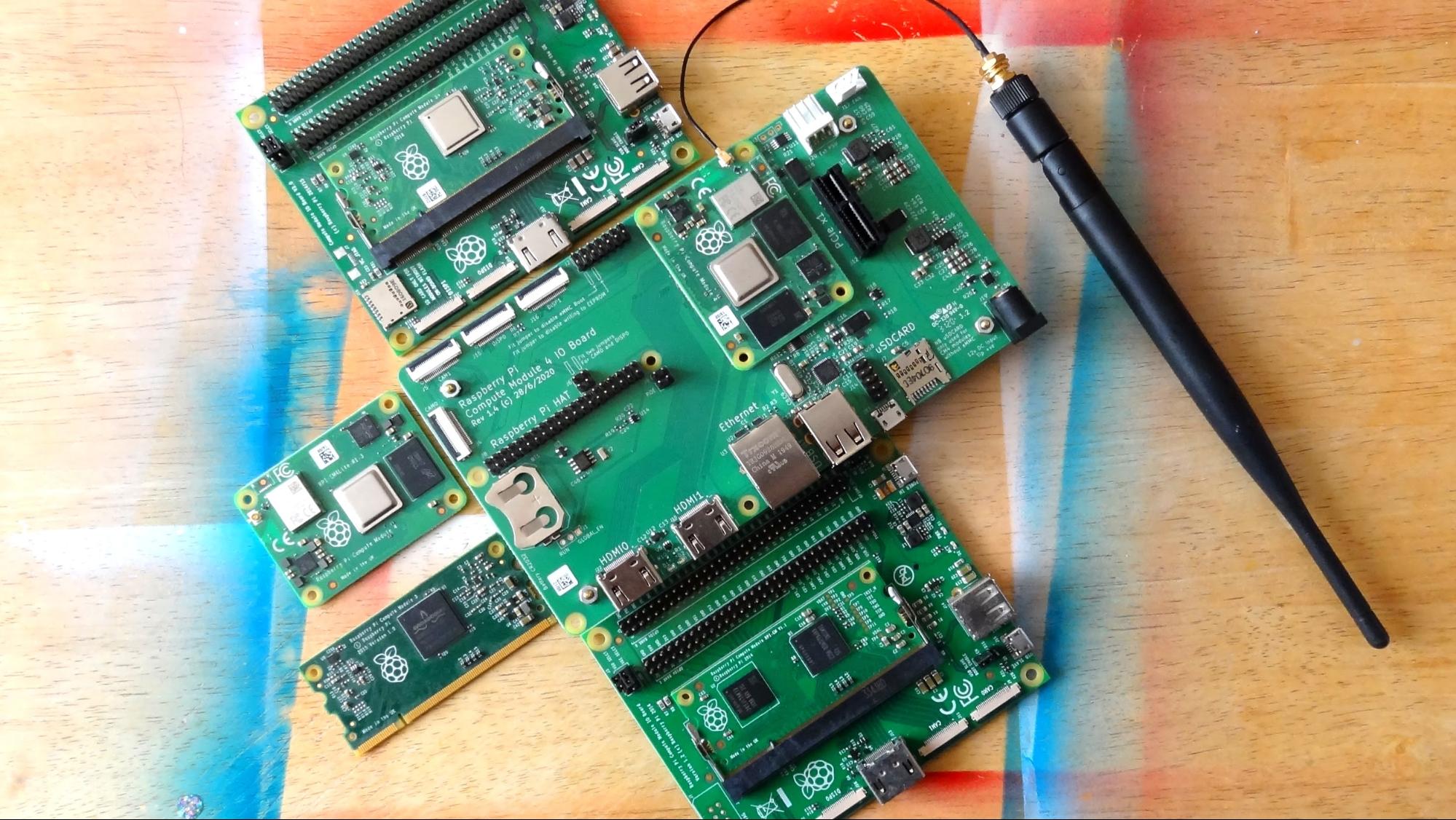
The Compute Module 4 is not for anybody. If you are happy enough using the Raspberry Pi 4 so at that place is little to entice you into using the Compute Module four. Merely if you are in the market to design your own carrier boards, or wish to embed the power of the Pi 4 in a small class factor or desire to have direct admission to the Pi's PCIe interface, then the Compute Module four is a wise investment.
How To Use Raspberry Pi Compute Module,
Source: https://www.tomshardware.com/reviews/raspberry-pi-compute-module-4
Posted by: nelsonbountly.blogspot.com


0 Response to "How To Use Raspberry Pi Compute Module"
Post a Comment